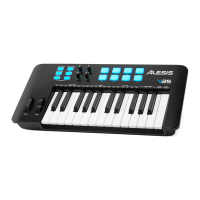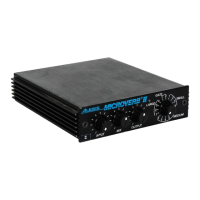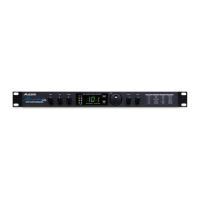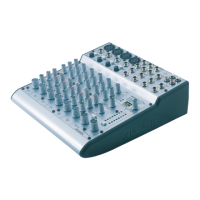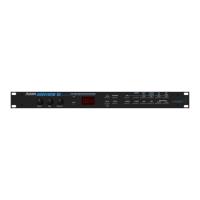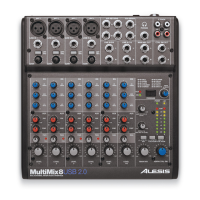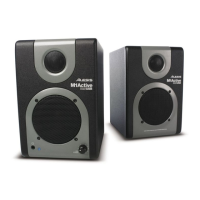Chapter 8
36 ALESIS ML-9600 REFERENCE MANUAL
Third, press the CREATE CD button. Several things happen at this time; the MasterLink checks the
playlist to insure that all Tracks are greater than 5 seconds in length (a Red Book limitation), and that
there are no "empty" Tracks (achieved by creating a new Track and not recording audio into that
Track). Depending on the type of CD you have chosen to create, the display will then prompt with a
"confirmation" page, shown in Figure 6.2.1 for a Red Book creation.
Figure 6.2.1
Create CD Confirmation
Pressing DOWN/NO while this screen is displayed will cancel the operation and return you to the
previous mode of operation.
Pressing UP/YES while this screen is displayed will begin the CD creation process. If there is no blank
CD in the drive, the CD tray will eject and the display will prompt you to insert a blank CD, as in
Figure 6.2.2.
Figure 6.2.2
Insert Blank CD-R Screen
Once a blank CD is inserted into the drive and the tray is closed, the unit will scan the disc to verify
that a recordable disc is present. Once the disc has been verified as a recordable CD-R and its length
has been determined, the MasterLink will verify that the playlist will fit on the CD-R that you have
inserted. If the playlist is too large to fit on the CD, the display will prompt with a "Playlist too large"
message and abort the CD creation process. If the playlist checks out, the recording process will begin.
6.3 THE RECORDING PROCESS
There are three stages of the CD recording process, which apply both to Red Book and CD24 creation:
initialization, recording, and finalizing. An additional "rendering" stage may apply to Red Book CD
creation.
6.3A RENDERING
When a playlist has Tracks in it that require DSP during Red Book CD creation, it is first necessary to
"render" the playlist to the hard disk. This means that the DSP is applied and the audio is re-recorded
to a special area on the disk set aside for this process. This DSP can include any or all of the user-
adjustable DSP (fades, EQ, limiting, compression, etc.) or sample rate conversion/noise shaping that
automatically occurs when a Red Book CD is created from a playlist that has Tracks at other than
44.1kHz/16-bit resolution. The amount of DSP applied dictates how quickly a Track can be rendered;
with the maximum amount of DSP applied, Tracks are rendered in near real-time.
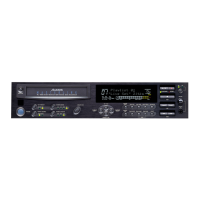
